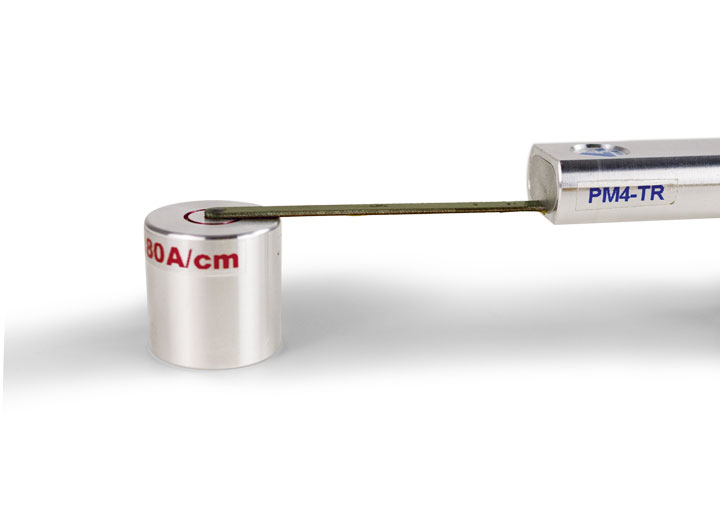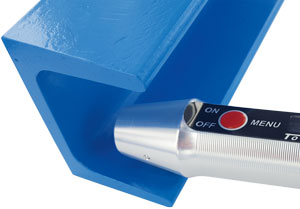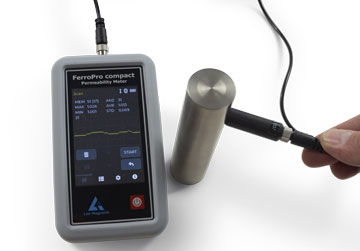Magnetic measurement
Contents (hide)
Contents "Magnetic measurement"
1. Magnetic field strength, remanence, permeability, magnetic flux - what is that?
1.1. Magnetic field strength (H)
1.2. Remanence / Residual magnetism
1.3. Magnetic permeability
1.4. Magnetic flux
2. Where does unwanted magnetism of steel parts come from?
3. Simple devices: compass and pole detector
4. How strong is a magnetic field? - Measurement of the magnetic field strength
5. How strong is a magnet overall? - Measurement of the flux
6. Low Magnetism - What are Permeability and Remanence?
7. Measure magnetic fields, measure remanence - what do you need?
7.1. Measuring instruments and probes
7.2. What is the difference between axial and tangential probes?
7.3. What is a calibration standard and what is it useful for?
7.4 Analog or digital display?
Magnetic field strength, remanence, permeability, magnetic flux - what is that?
Various parameters can be determined in connection with magnets. Because it often comes to confusion, here is a brief overview. For a precise definition and the physical fundamentals, we ask you to look up in the literature.
Magnetic field strength (H)
The unit of measurement for the strength of the magnetic field is A/m (due to the value data rather used are A/cm or kA/m), older also Oersted (Oe). Since the magnetic flux density B, measured in Gauss (Gs) or Tesla (T), can be converted by a constant factor, in practice magnetic field strength and flux density (and thus the units A / cm, kA / m, Oe, Gs, T) can be used alternately.
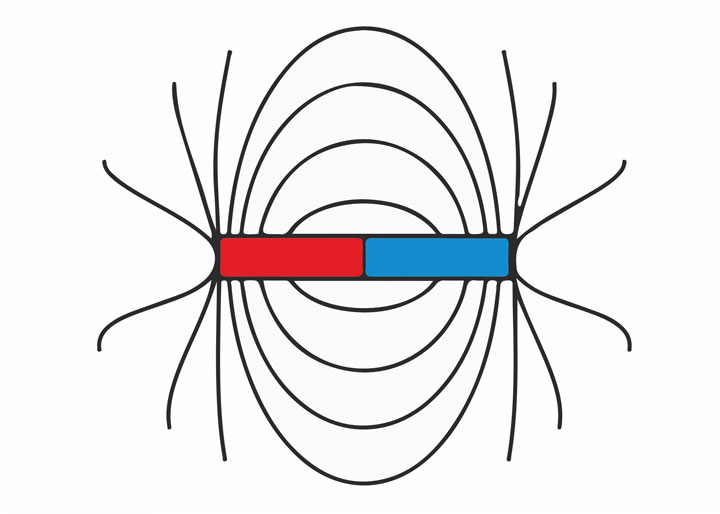
Devices for measuring the magnetic field strength are called magnetometers, magnetic field meters, gaussmeters or teslameters.
Remanence / Residual magnetism
Remanence or residual magnetism is a special consideration of the magnetic field strength, the remaining remaining magnetic field strength after the influence of a magnet or after a demagnetization process.
The remanence can also measure magnetic field gauges, gaussmeters and teslameters.
Magnetic permeability
The relative permeability (μr) is a parameter of how strongly a substance can be magnetized. The value plays an important role especially with stainless steels. Another term used for this is magnetic conductivity. There is no unit of measure, μr is dimensionless. Simple measuring instruments examine the range between μr = 1 (permeability of the vacuum) to 2.
A permeability meter from our house is the model Ferromaster.
Magnetic flux
The magnetic flux (Φ) describes the total power of a magnet and can be measured with a fluxmeter and a coil. Unit of measure is the volt-second (Vs), also Weber (Wb) or former Maxwell (Mx).
To measure the magnetic flux or flux measurement you need a fluxmeter. Compared to the hand-held devices for measuring magnetic fields or the permeability, these devices are more complex, they are laboratory devices with a connected Helmholtz moment coil.
Where does unwanted magnetism of steel parts come from?
Steel parts that are magnetic can create problems in further processing. The component cleanliness is reduced. For example, iron filings stick, causing tool wear. Or sensors are disturbed. Where does this magnetism come from?
Generally valid one can not call the cause. For example, it is observed that a steel bar is easily magnetized by vibration during transportation. However, if you use magnetic hoist tools that are very popular in general and gentle on materials, you have a possible reason for residual magnetism. A first step: Determine the residual magnetic field strength. Is it within your tolerance values? If not, you must either demagnetize the parts or dispense with the magnetic crane.
How strong is a magnetic field? - Measurement of the magnetic field strength
The question is asked to determine the peak value of a magnet or residual magnetism. Devices that perform these tasks are referred to as magnetometers, magnetic field meters, teslameters or gaussmeters. Considered here is a DC field without pole change.
Position of the measurement and design of the probe are decisive for the measured value
The field lines of a magnetic field run from the north pole to the south pole of the magnet. In a rod-shaped magnet, e.g. the poles are mostly at the two ends. There is then the field strongest. Depending on the shape of the magnet, the field lines run differently, in the horseshoe magnet they are parallel within the arc. The closer you measure the magnetic field strength at the pole, the higher it is.
In the probe, a so-called Hall sensor takes up the Lorentz force, from which the field strength is calculated. The closer this Hall sensor comes to the pole, the more force it has. Different types of probes (axial, tangential) have different installation forms of the Hall sensor and lead to different measured values.
When measuring you have to explore: where are the poles? In which direction does the probe measure the most? Does turning or panning the probe cause a change? This allows each individual magnet to be examined for its maximum field strength.
How strong is a magnet overall? - Measurement of the flux
For the examination of a permanent magnet or magnetic system, the question is how the magnet quality and how strong the magnetization of the magnet are. The measurement of the magnetic field strength with a magnetic field meter is only possible at certain points and does not consider the volume of the magnet. This task is done by a Fluxmeter.
In combination with a Helmholtz moment coil, the magnetic flux of permanent magnets can be determined very accurately, since the entire volume of the magnet is measured independently of position. The effect of the magnet on the coil is determined in the form of an electrical voltage and converted into the flux value (or flux).
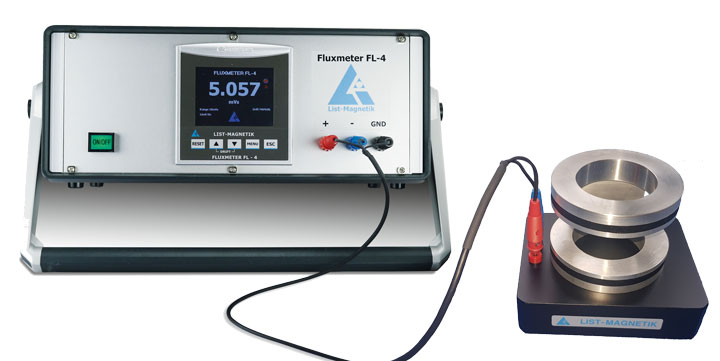
Fluxmeter FL-4
Low Magnetism - What are Permeability and Remanence?
Magnetic permeability is an indication of how strongly a substance is magnetizable. Meaningful is the statement where actually no magnetism is desired, for example in stainless steel.
Magnetic permeability should not be confused with remanence or residual magnetism: remanence / residual magnetism tells how strongly an object is magnetized, permeability tells how easily it could be magnetized.
With all magnetic field measurements one must consider that the earth itself has a magnetic field. It is very weak at 0.2 A / cm. Depending on the orientation of the probe, this value will increase or decrease the reading. Therefore, deviations of 10% in the remanence range by the earth field are conceivable, and one should pay attention to the repeatability of the measurement, the position of the object and the position of the probe.
When measuring the permeability due to technical limitations only weak magnetic material is measurable.
Suitable devices for this purpose are
- the magnet permeability meter FerroPro compact >>
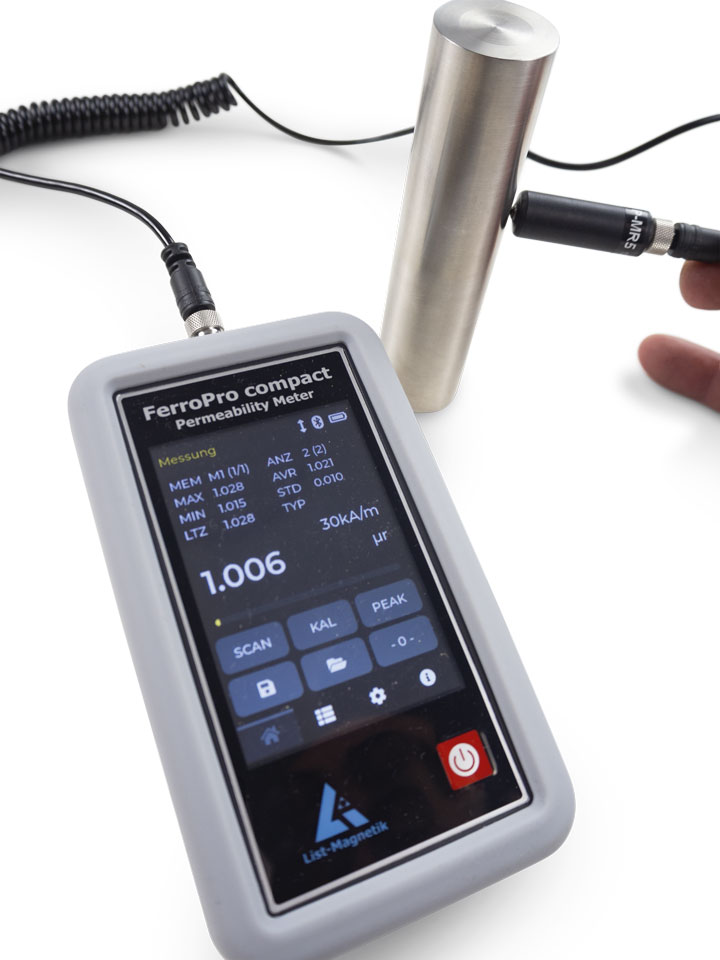
- The residual magnetic field meter MP-80 >>
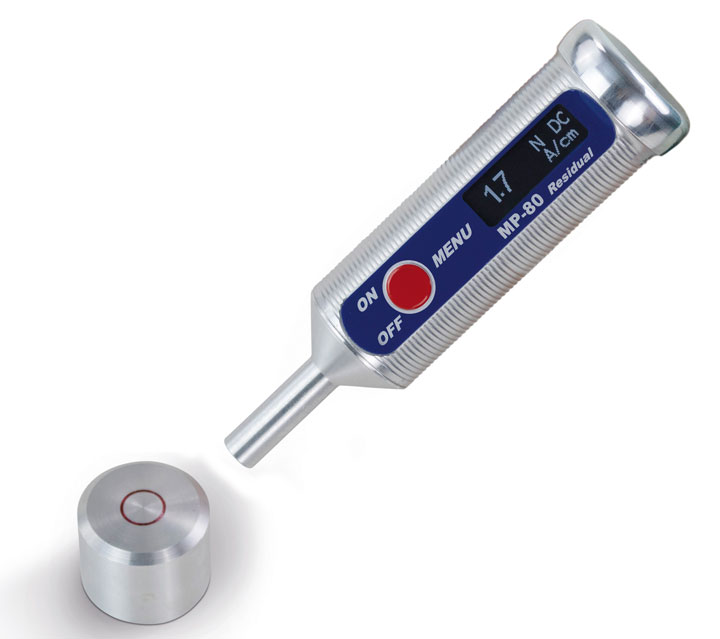
Measure magnetic fields, measure remanence - what do you need?
Measuring instruments and probes
In which units do you have to measure the magnetism? Depending on the device, in addition to the base unit A / cm, Gauss (Gs) or Milli-Tesla (mT) can also be displayed. Important is the question of which maximum field strengths are to be expected. List-Magnetik has a selection of devices and probes for every purpose - whether one-handed, with a separate probe or laboratory device.
Mentioned at this point are the magnetic field meters MP-810, MP-1000, MP-4000.
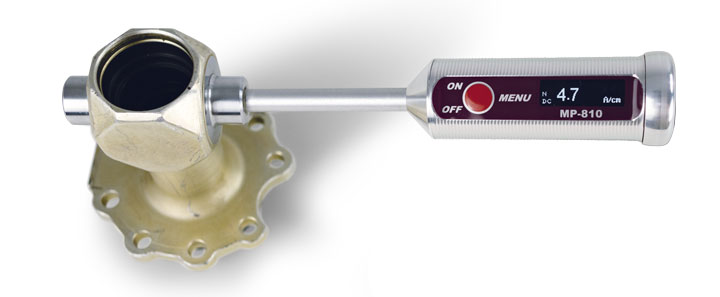
Magnetic Field Meter MP-810
What is the difference between axial and tangential probes?
Axial probes measure in the direction of the probe piston. Tangential probes measure at 90 ° to the probe. For measurements in cavities or narrow tubes tangential probe are better suited. Ultimately, one can say that the tangential probe is the more universal tool. Because practically all measurements of the axial probe are tangentially feasible. An advantage of List-Magnetik's axial probe is the 2mm gap between the Hall sensor and the probe cap. In ball bearing manufacturing, this value has become the de facto standard for the probe.
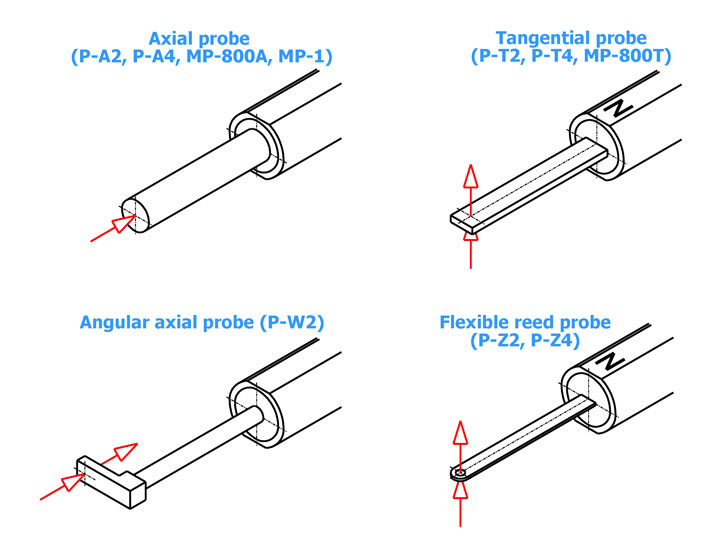
What is a calibration standard and what is it useful for?
A calibration standard is a reference magnet - a permanent magnet that always displays the same value for the same position of the same probe. So you can be sure that the probe is still working correctly. With precision calibration standards, the axial or tangential probe is held in the opening so that it can not be shaken. Probe probes would damage the probe, so check with the simpler lay-up calibration standards.
The combination of instrument, probe and standard forms a unit that is calibrated and certified together. Using a probe on a calibration standard that has been tuned with another probe may cause the reference value to be slightly different. That's because the probes can not always be built exactly the same. However, this deviation is always constant.
